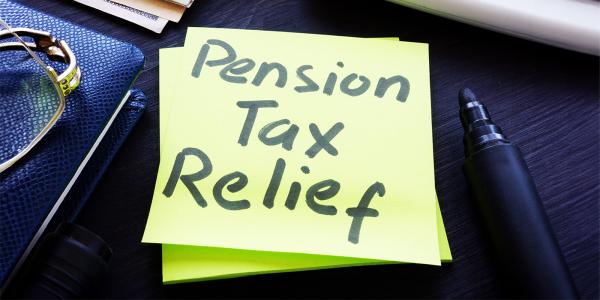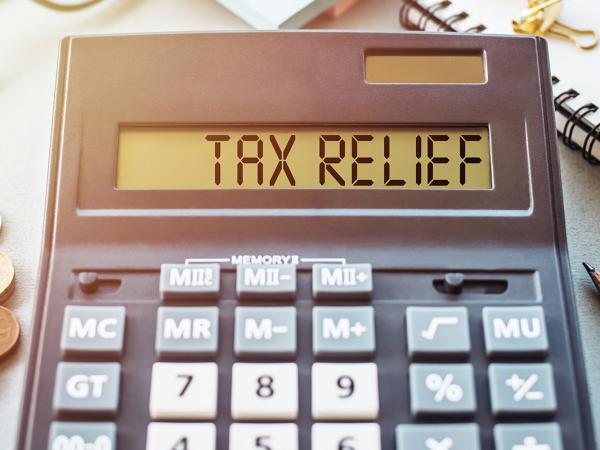Tax relief on pension contributions
Most people get a government top-up to their pension savings in the form of tax relief on their contributions. The way it is given depends on what kind of pension scheme you are in.

Content on this page:
Introduction
When you save into a pension, the government usually gives you a top-up as a way of encouraging you to save for your future. This top up comes in the form of tax relief.
Conditions for relief
Tax relief is only given on pension contributions if you are under age 75 and are a relevant UK individual. Most often this means that you were resident in the UK or had taxable UK income in that year.
In addition, while the amount you can put into your pension pot is not restricted, there are certain limits on the amount of contributions qualifying for tax relief:
- Up to the higher of (a) your UK relevant earnings or (b) £3,600 gross contribution. We explain each of these in more detail below.
- There are further limits called the annual allowance and the money purchase annual allowance, which place an overall cap on the amount you can contribute to a pension scheme each year without having tax relief clawed back. You can read more about these limits on our page Pension contributions tax relief: limits.
UK relevant earnings
As mentioned in the first bullet point above, you only get tax relief on contributions up to the maximum of your UK relevant earnings. Your UK relevant earnings include:
- Employment income – any taxable wages, bonus, overtime or commission.
- Taxable benefits in kind.
- Statutory sick pay and statutory maternity pay, if paid by your employer and taxable.
- Trading income – whether as a sole trader or partnership.
- Profits from a qualifying furnished holiday letting business.
You can read more about the different types of income that count as UK relevant earnings on in HMRC’s Pensions Tax Manual on GOV.UK.
You will see we mention that profits from a qualifying furnished holiday let business count as UK relevant earnings for these purposes, but note that the special tax rules for furnished holiday lets will be removed from 6 April 2025. From then on, income from furnished holiday lets will be treated the same as other property income.
Property income (that is property income that does not meet the specific furnished holiday let conditions) does not normally count as relevant earnings for pension contribution purposes as it is treated as ‘unearned’ income.
But if you are running a business from a property, such as a bed and breakfast, and your profits are treated as being from a trade, those would be earnings for pension purposes.
Gross contributions and net contributions: explained
The contribution limits mentioned above (under the heading: Conditions for relief) apply to gross contributions. It is therefore important to understand the difference between ‘net’ and ‘gross’ contributions. Generally speaking, the gross contribution is the total increase to your pension pot as a result of the pension contribution.
So, if your pension uses the relief at source method of tax relief and you earn, say, £5,000 in the 2023/24 tax year, you can make a gross contribution of up to £5,000 into that pension. This equates to a net contribution (the amount actually paid in by you) of £4,000, because you make your contribution net of basic rate tax relief (£1,000) which the pension scheme will claim directly from HMRC. If you earn £3,000, you can still make a gross contribution of £3,600 (£2,880 net). In either case, the fact that you do not earn enough to pay any income tax does not prevent the pension scheme claiming the tax relief. See also the heading below: Relief for non-earners.
If your pension scheme uses the net pay arrangement method, tax relief is instead given by deducting the gross pension contribution from your earnings before you pay tax. Tax relief is given there and then by reducing your taxable earnings. Therefore there is no tax to reclaim from HMRC and you have made a gross contribution.
We discuss a potential problem for those participating in a net pay arrangement scheme on our page Pension tax relief: problems for low earners.
You can read more detail about how tax relief is given in these different circumstances on our page How tax relief is given on pension contributions.
Salary sacrifice is another way that some people contribute to their pensions.
Relief for non-earners
If you have no UK relevant earnings, you are limited to tax relief on a gross contribution of £3,600 (£2,880 net). The fact that you do not pay any income tax does not prevent the pension scheme claiming the tax relief from HMRC if it is operating a relief at source scheme. This includes children if they have someone who would like to set up a pension scheme for them.
Amount of relief
Tax relief is available on your pension contributions at the highest rate of income tax that you pay. So, for non-Scottish taxpayers, this means:
- Non-taxpayers (that is, people who earn under the personal allowance) – get no pension tax relief – unless they are in a relief at source scheme as explained above.
- Basic-rate taxpayers get 20% pension tax relief
- Higher-rate taxpayers get 40% pension tax relief
- Additional-rate taxpayers get 45% pension tax relief
In Scotland, there are different income tax rates so pension tax relief is applied in a slightly different way – see our page How tax relief is given on pension contributions, and our page explaining Scottish income tax in more detail.



